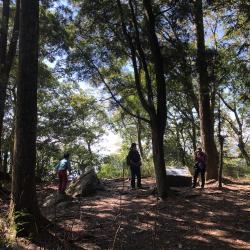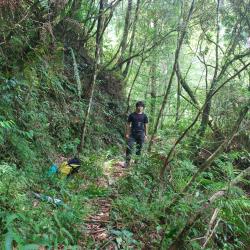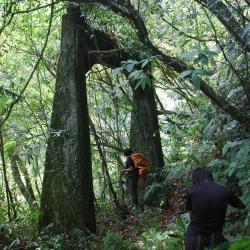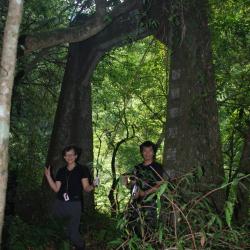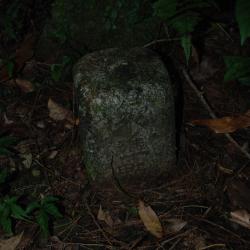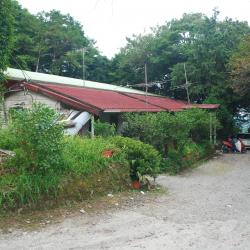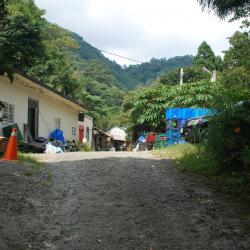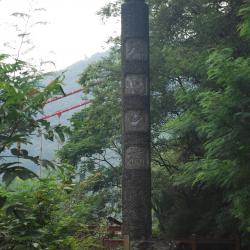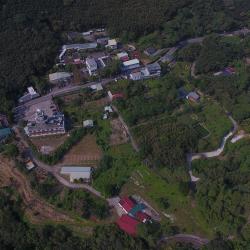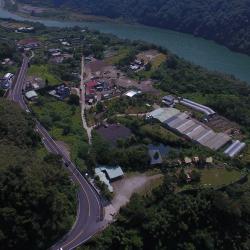The Wantian Battery, in Tai'an Township of Miaoli County, was set up for the Government-General in Taiwan to monitor the northern Atayal group. The battery was erected on the ridge line or highest point of the mountain overlooking tribal villages in order to intimidate indigenous people.
In the early days of Japanese rule, the governor of Taiwan, Sakuma Samata organized a large-scale crusade to manage the indigenes. In 1911, he suppressed the northern group of Atayal tribe with superior force. Police Officer, Maruda Kiyoshi, was killed during this fight and therefore, the battery was named after him.
Today, the remains of the Wantian Battery are hidden in the forest of Cryptomeria. The stone road that leads to the battery from Erbensong Police Post was mainly used to transport food and firearms supplies.
